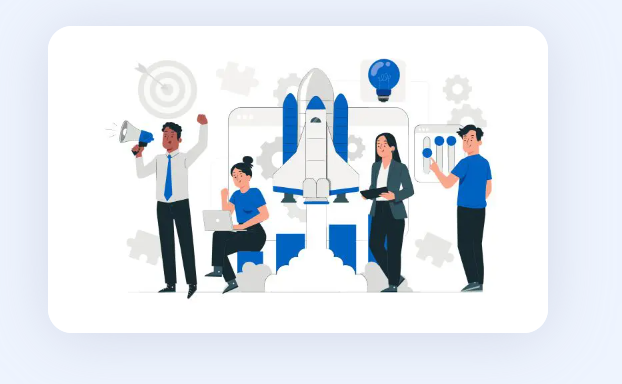Introduction
Launching a successful startup requires strategic planning, innovation, and effective product development. In this guide, we'll delve into the intricacies of startup product development, providing you with a roadmap for success. Whether you're a budding entrepreneur or a seasoned business owner, these insights will empower you to navigate the challenging yet rewarding path of bringing a product to market.
1. Understanding the Startup Landscape
Embarking on the startup journey requires a deep understanding of the dynamic landscape. Explore market trends, identify gaps, and align your product with current demands. This foundational step sets the stage for a successful venture.
2. Market Research Magic
Delve into comprehensive market research to unearth valuable insights. Understand your target audience, competitors, and market trends. This knowledge forms the bedrock of informed decision-making throughout the product development lifecycle.
3. Innovative Ideation
Creativity fuels successful startups. Foster a culture of innovation within your team. Encourage brainstorming sessions, embrace out-of-the-box thinking, and explore unique solutions to address market needs.
4. Prototyping Precision
Before diving into full-scale production, invest in prototyping. This step allows you to identify potential challenges, refine your product, and gather valuable feedback. A well-crafted prototype significantly reduces the risk of costly errors later in the process.
5. Tech Trends and Integration
Stay abreast of technological advancements relevant to your industry. Integrate cutting-edge technologies to enhance your product's functionality, staying ahead of the competition and meeting consumer expectations.
6. Agile Development Methodology
Adopting an agile development approach ensures flexibility and adaptability. Break down the development process into manageable iterations, allowing for quick adjustments based on evolving market dynamics.
7. User-Centric Design Philosophy
Prioritize user experience in every aspect of product development. A user-centric design philosophy not only attracts customers but also fosters brand loyalty. Solicit feedback and iterate design elements to optimize user satisfaction.
8. Strategic Marketing Blueprint
Craft a comprehensive marketing strategy early in the development process. Leverage digital platforms, social media, and influencer marketing to create buzz around your product. A well-executed marketing plan is integral to a successful launch.
9. Quality Assurance Excellence
Ensure rigorous quality assurance testing throughout the development lifecycle. Identifying and rectifying issues promptly guarantees a polished, reliable product that instills confidence in your customer base.
10. Scaling for Success
As your product gains traction, be prepared to scale operations. Anticipate increased demand, optimize production processes, and expand your team strategically. Scaling efficiently is the hallmark of a sustainable and successful startup.
Startup Product Development: Navigating Challenges and Celebrating Triumphs
Embarking on the journey of startup product development is a thrilling yet challenging endeavor. From concept to market, each step requires meticulous planning, innovation, and adaptability. Remember, setbacks are learning opportunities, and success is the culmination of dedication and resilience.
FAQs
Q: How long does startup product development typically take? Embarking on the startup journey requires a deep understanding of the dynamic landscape. Explore market trends, identify gaps, and align your product with current demands. This foundational step sets the stage for a successful venture.
Q: What role does market research play in startup product development? Delve into comprehensive market research to unearth valuable insights. Understand your target audience, competitors, and market trends. This knowledge forms the bedrock of informed decision-making throughout the product development lifecycle.
Q: How important is prototyping in the development process? Before diving into full-scale production, invest in prototyping. This step allows you to identify potential challenges, refine your product, and gather valuable feedback. A well-crafted prototype significantly reduces the risk of costly errors later in the process.
Q: Can a startup succeed without a robust marketing strategy? Craft a comprehensive marketing strategy early in the development process. Leverage digital platforms, social media, and influencer marketing to create buzz around your product. A well-executed marketing plan is integral to a successful launch.
Q: Why is user-centric design crucial for startup products? Prioritize user experience in every aspect of product development. A user-centric design philosophy not only attracts customers but also fosters brand loyalty. Solicit feedback and iterate design elements to optimize user satisfaction.
Q: How can startups effectively navigate challenges during scaling? As your product gains traction, be prepared to scale operations. Anticipate increased demand, optimize production processes, and expand your team strategically. Scaling efficiently is the hallmark of a sustainable and successful startup.
Conclusion
Embarking on the journey of startup product development demands a strategic mindset, unwavering dedication, and a commitment to excellence. By following these proven steps and embracing the challenges with a positive attitude, you're poised for success in the dynamic world of startups.

